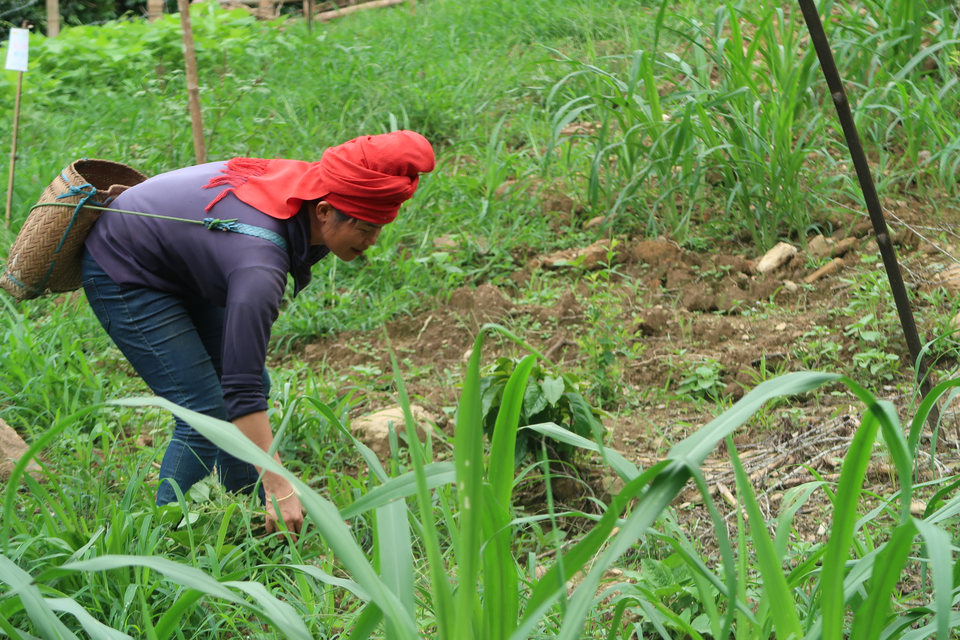Winter is coming: How to sustainably feed livestock in Northwestern Vietnam
- From
-
Published on
31.08.23
- Impact Area

In the Northwest Highlands of Vietnam, livestock such as cattle and buffalo often graze on native pasture on the vast communal land and forests in the uplands. Yet, as winter arrives, livestock producers prepare themselves to confront a familiar challenge that arises: livestock feed shortage.
Livestock production is a critical agricultural activity in Vietnam. In fact, the subsector has provided a socially stabilizing force, providing livelihoods for many people — especially from ethnic minorities — in the context of rapidly changing macroeconomic conditions both in the country and globally. Recently, the livestock industry has faced growing challenges over repeated patterns of scarce feed sources to low livestock outputs, targeting the intersection of animal nutrition, livestock productivity, and the environment. But without sufficient feed during the winter, farmers struggle to meet market demands.
Tracing the roots of this persistent issue requires experts to understand that in livestock production, the problem stems literally from the ground up.
Quality + Quantity = Sustainability
Livestock production in Vietnam is mainly practiced by smallholder farmers, who largely rely on native pastures, crop residues, and free grazing on communal land and forests for their animals’ nutrition. While there are still many farms subscribing to a semi-grazing feeding system, which supplements animals’ diet with cut-and-carry native grass, planted grass, and crop by-products (e.g. rice straw, maize stover, sugarcane tops), researchers observe growing interest and prioritization of quantity over quality of forage grasses.
This recurring pattern of dependence on forage quantity continues to widen the gap in sustaining livestock production as both native and grown grasses see huge decline in quantity and quality during winter. Crop by-products similarly fall in supply during the colder season. If this trend continues, livestock would fall short of meeting their required nutritional status, and they are also expected to perform poorly in terms of production, as observed by scientists from the National Institute of Animal Sciences (NIAS).
“Smallholder farms play [an] extremely important [role] because they account for more than 50% of livestock production [in Vietnam]…We hope that we can improve the competitiveness of small farms in the market, and help them have the chance to apply the innovation technology in the production,” – Le Thi Huyen, NIAS Senior Scientist Assoc. Prof.
Related news
-

Accelerating Sustainable Agriculture: Insights from Global Leaders at New York Climate Week
Eisen Bernard Bernardo14.10.25-
Climate adaptation & mitigation
-
Mitigation
Author: Katherine Nelson At New York Climate Week September 21-28, 2025, the World Economic Forum’…
Read more -
-

Africa hosts landmark GGAA 2025 Conference in Nairobi, centering climate-smart livestock solutions
International Livestock Research Institute (ILRI)12.10.25-
Adaptation
-
Climate adaptation & mitigation
-
Mitigation
For the first time in its history, the International Greenhouse Gas and Animal Agriculture (GGAA)…
Read more -
-

Emboldening Equitable Climate Adaptation: A Handbook for Field Research Leaders
Eisen Bernard Bernardo10.10.25-
Adaptation
-
Climate adaptation & mitigation
Climate change makes life incredibly difficult for smallholder farmers, but the programs meant to he…
Read more -
